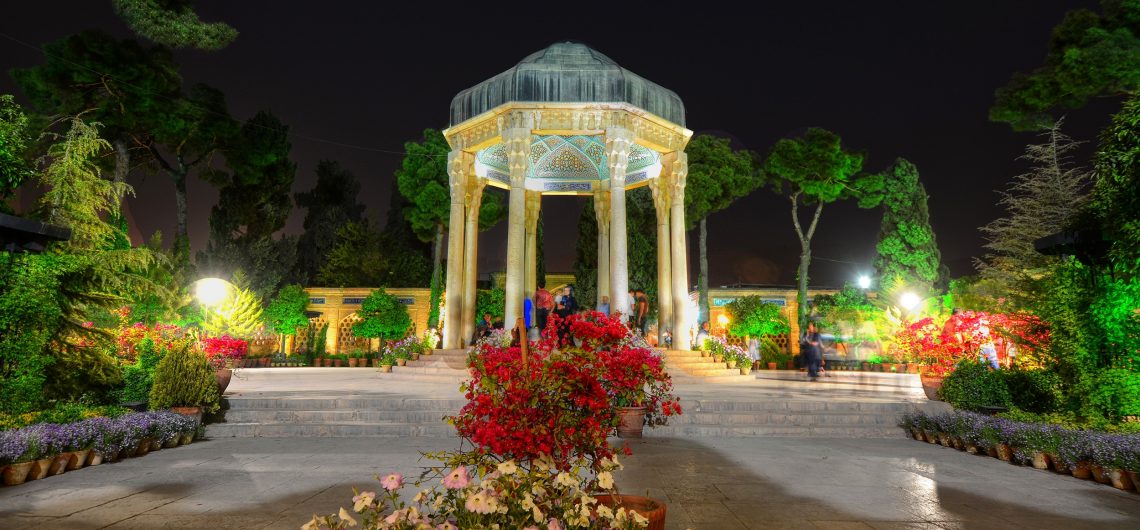Persepolis, is a mirror of ancient Iranian land history and culture, as ordered by Darius the Great in 1124 and about 125,000 square meters, built as one of the architectural masterpieces of its time worldwide. It is also one of the most spectacular places in Shiraz to visit. Persepolis in fact is the culmination of the elegance and creativity of Iranian artists in applying the cultures of various peoples such as Egyptians, Babylonians, Greeks, Medes, and Armenians who were under the control and command of the Achaemenids. Darius’s purpose in building this was to build a capital in his empire that he did not have, and to do so, he chose Marvdasht’s vast plain of ancient history. In the Achaemenid era, there was a residence for every season. The summer residence in Hegmataneh (present-day Hamedan), the winter residence in Susa (capital of Elam) and Takht-e-Jamshid were also the spring residence for Iranian national celebrations (Nowruz). After Darius the Great, his son Xerxes and his grandson Ardeshir I added magnificent buildings to this art collection. n total, the construction of Persepolis palaces lasted about 180 years, was used for 200 years and was destroyed and abandoned by Alexander the Great after its destruction. Persepolis complex is located 10 kilometers northeast of Marvdasht in Fars province. This building is located in Shiraz, but the distance from Persepolis to the beautiful city of Shiraz is more than 60 km.
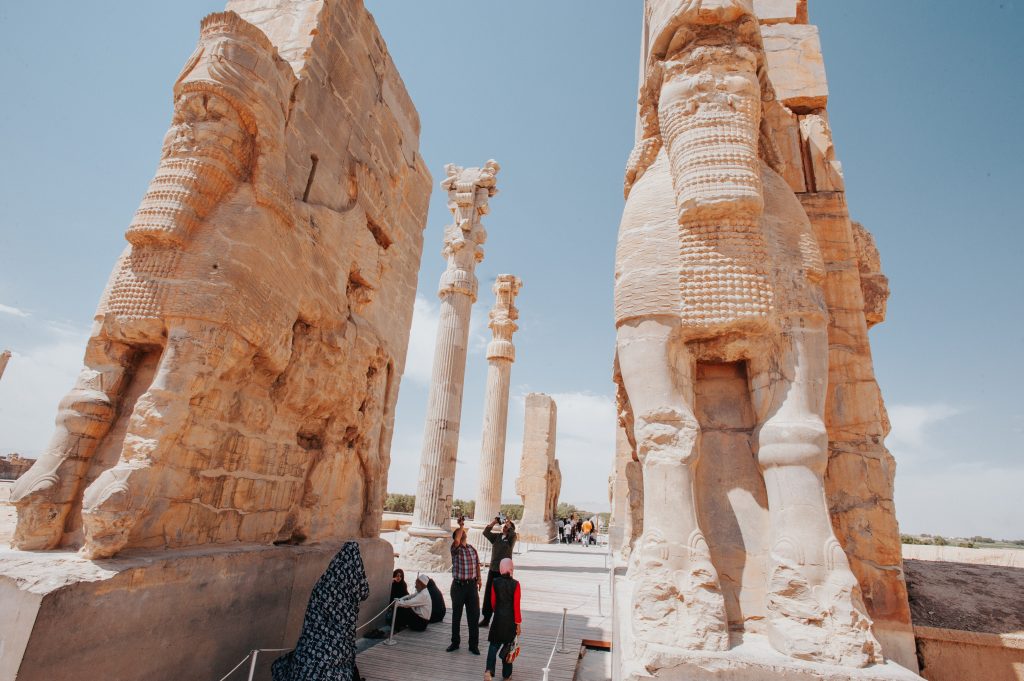
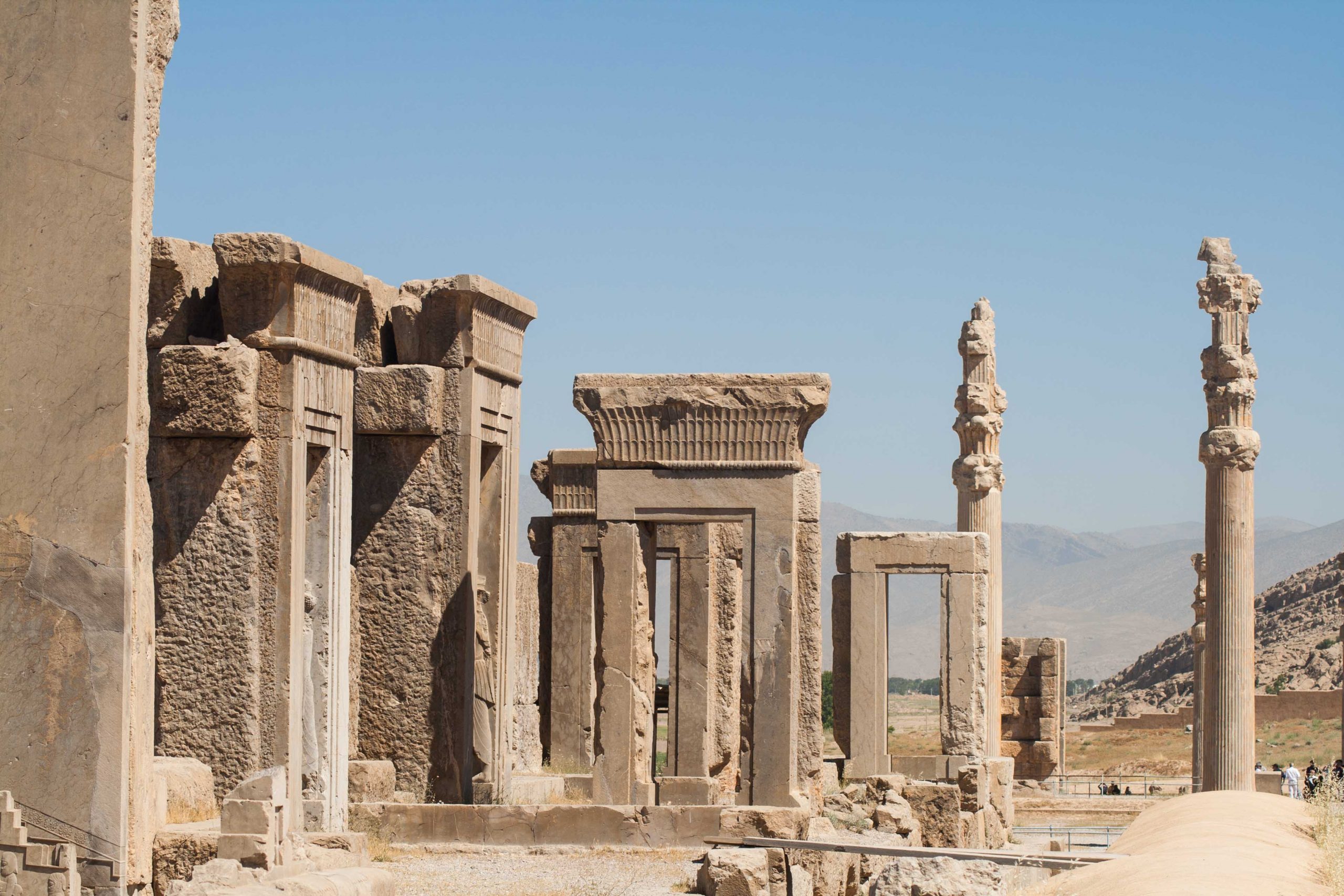
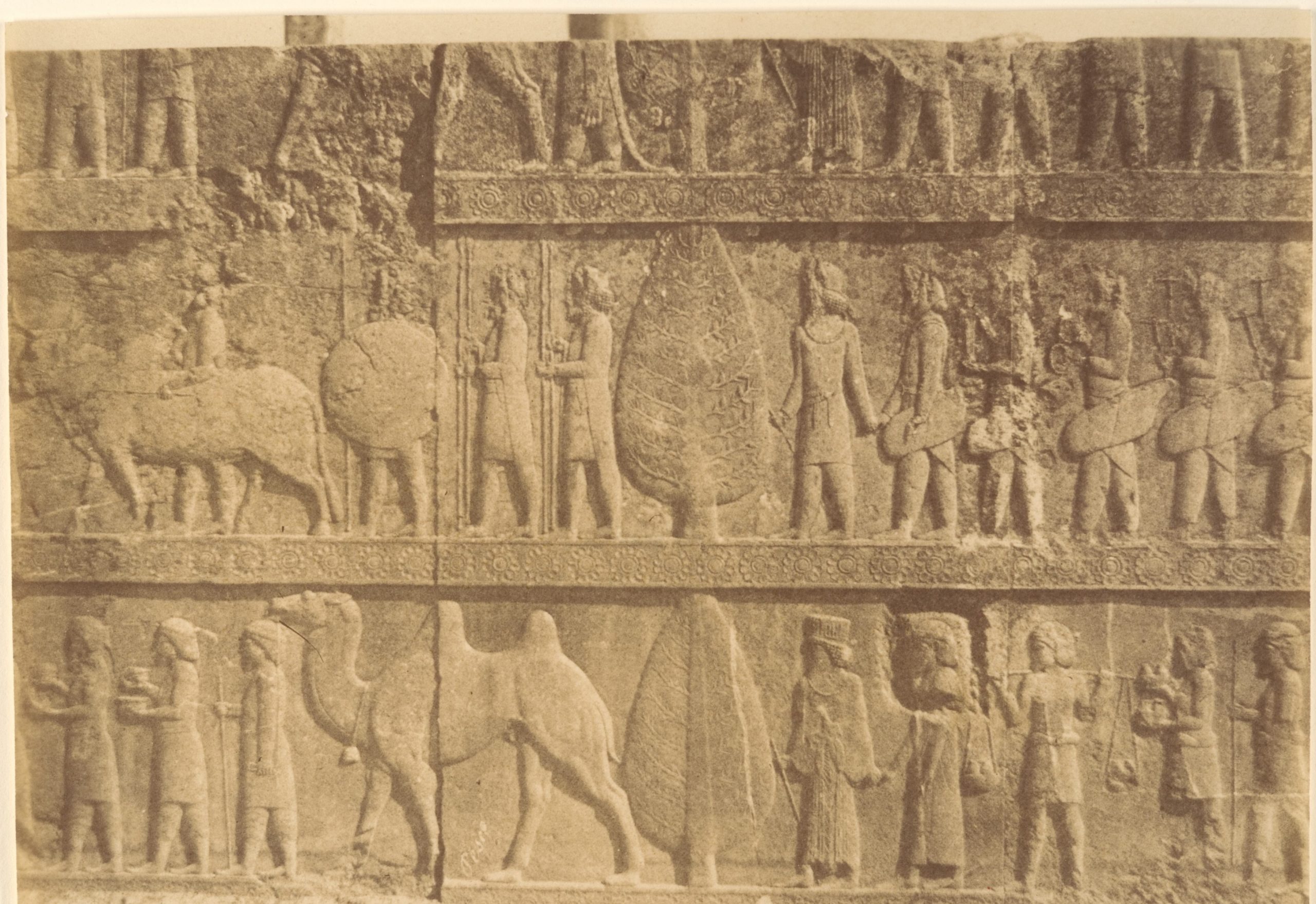
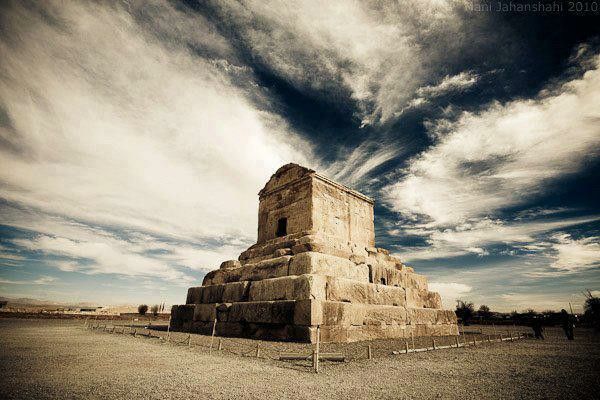
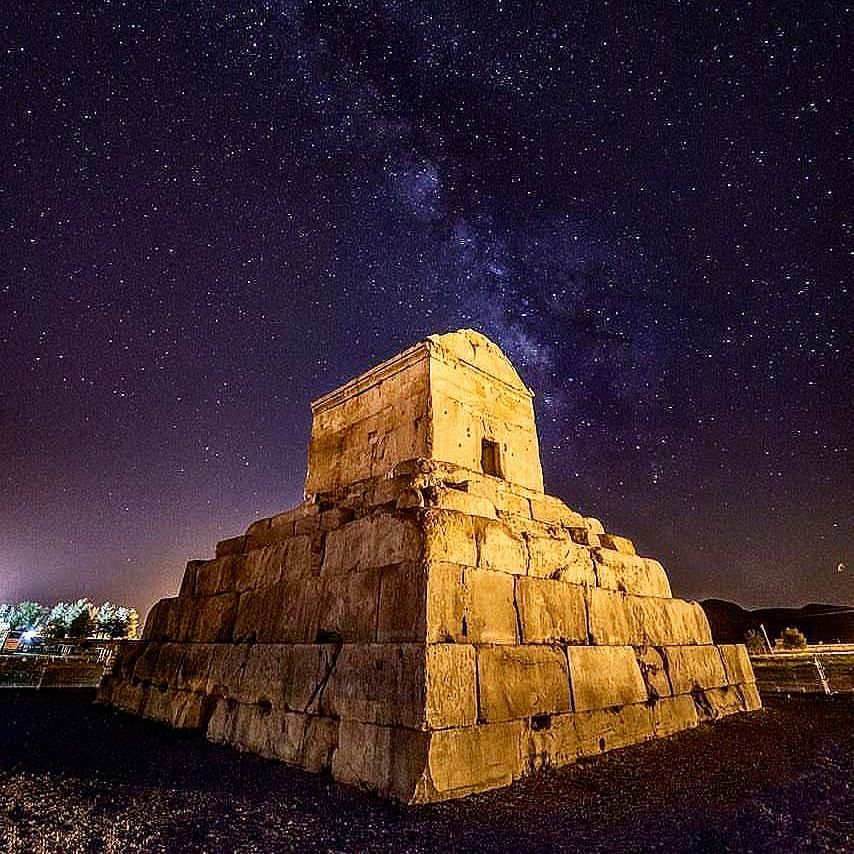
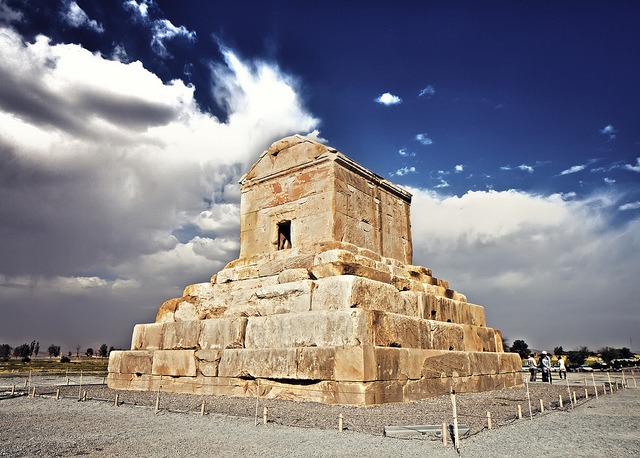
The ancient collection of Pasargad, a reminder of the glorious Achaemenid era, is located in a city of Pasargad in Fars province. Historic sites include the Pasargad Mosque, Pasargadae Gardens, the Gate Palace, the Public Bar, the Dedicated Palace, the Duchess, the Cambodian Tomb, the Mozaffari Caravanserai and the Royal Garden Fountains. But undoubtedly the most prominent attraction is the tomb of Cyrus the Great, formerly known as “Mashhad Mother Solomon”. The Pasargad Collection was listed as the fifth Iranian work on the UNESCO World Heritage List on July 2004 (100% votes). Pasargad Plain, dating back to the Paleolithic, is located 130 km north of Shiraz. It is likely that Cyrus the Great himself ordered this magnificent collection. Evidence such as trilingual inscriptions (Elamite, ancient Persian and Akkadian) and more or less similar Persepolis architecture reinforce this possibility. The ancient city of Pasargadae was the first capital of the Achaemenid Empire. The main site is approximately 160 hectares and is surrounded by a large natural area. Tomb of Cyrus the Great in the south, Tal Takht (Solomon’s Throne) and fortifications on the north hill of the courtyard, the royal complex (Gate, Public hall or palace, P palace and the Royal garden or Chahar bagh) in the center of the main courtyard and Solomon prison in the north, are royal collections. To get to Pasargad you first need to travel to Shiraz. Afterwards, you can reach Shiraz-Isfahan road past Saadat Shahr and after 120 kilometers cross the road to the village of “Mother of Solomon”. From here you will reach Pasargadae after about 4 km. It is advisable to use a personal car to get to the tomb of Cyrus. In addition, there are many tours that take this route each week.
The Naghsh-e Rajab is one of the most valuable works of ancient Persian carving. This place is located 13 km north of Marvdasht,3 km north of Persepolis and on the right of Shahi Road. The Royal road was a highway that, twenty-five centuries ago, connected one of the royal capitals of Iran with the capital city of Sardinia in the western end of the Anatolian Peninsula. On the hill side of the mountain, there is a cave-like courtyard which three chambers of coronation on the northeast and southest walls of the Sasanian kings have been caved. It is a UNESCO World Heritage Site.
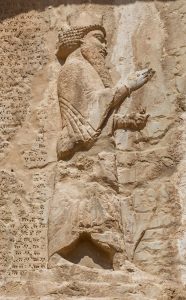
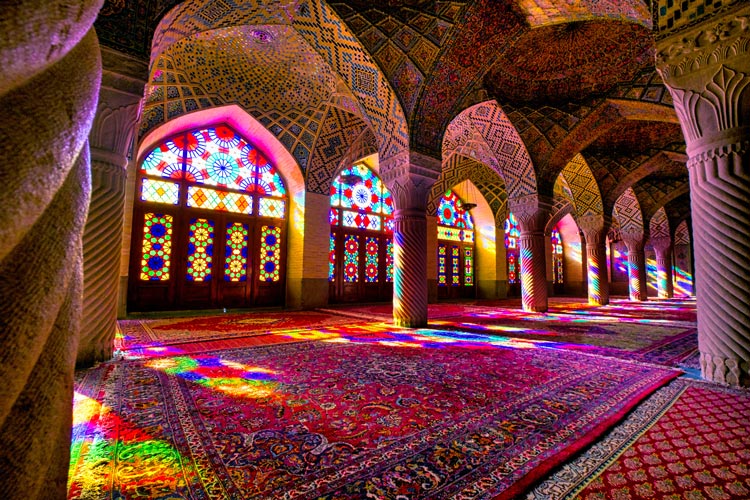
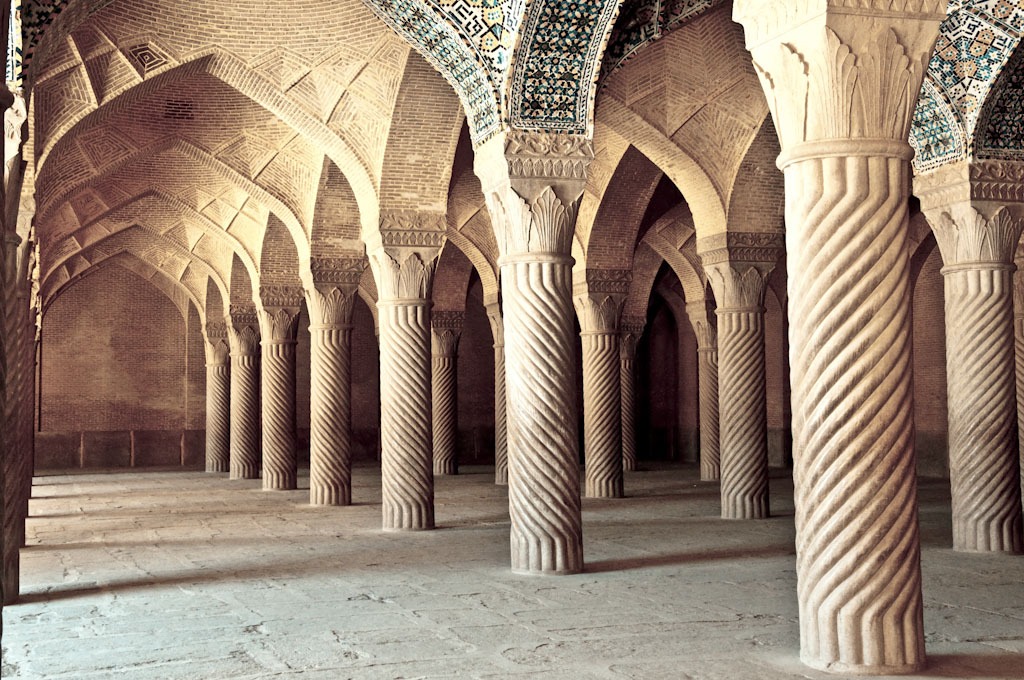
Vakil Mosque or Sultani Mosque is a historical mosque dating from the Zandian period in Shiraz. Located to the west of the Vakil Bazaar and at the far end of the swordsman’s order, the mosque has a two-porch design and has two south and east sheds. South Shabestan with monolithic and spiral stone columns is a feature of Iranian architecture and is one of the most spectacular areas of the mosque, which has five monolithic columns. According to the traditional architecture of this country, the mosque is placed in a social complex and has created a beautiful harmony between religion and the world. The tiling of the apron and the north and south porch is also very beautiful and of seven colors mosaic. This work of ancient Iran was registered as one of the national monuments of Iran on 9 July 1932. The mosque was built by order of Karim Khan Zand. One of the monuments in the vicinity of this historic building is the Vakil Bazaar and Vakil Bath, known as Vakil Collection. It is located in Shiraz, in the center of the city. It was built between Vakil’s Bath and Vakil’s Bazar in the neighborhood of Dard Prince, Ayatollah Taleghani street.
Nasir al-Molk Mosque is one of the most famous sights in the city of Shiraz, located in an old neighborhood called Good Araban. This masterpiece of Iranian-Islamic architecture will initially make you vanish; what is most prominent in this building is the use of pink tiles, which has given it the nickname of the Pink Mosque. After crossing the vestibule and entering the rectangular courtyard, everything looks just like other mosques in Iran; beautiful tile designs, rectangular pools in the middle of the courtyard etc. are all things found in most of Iran’s historic mosques and seeing them is not far from expectation. Shortly after you reach the inside of the nightstand, you will notice the difference between the religious monument; the sunlight passes through the mosque’s colored glass and the colors play in the mosque. After more than 150 years, this mosque is still used for the worship of people and its unique beauty and appearance has made it one of the most popular names in Iran’s list of national monuments with the number 369 since February 1956. According to historical documents, it is worth mentioning that Nasir al-Mulk Khan was a very dedicated man devoted to charity and helping the needy. If you want to visit this beautiful mosque you are advised to go between 7 am to 10 am to see the light and color play in this mosque.
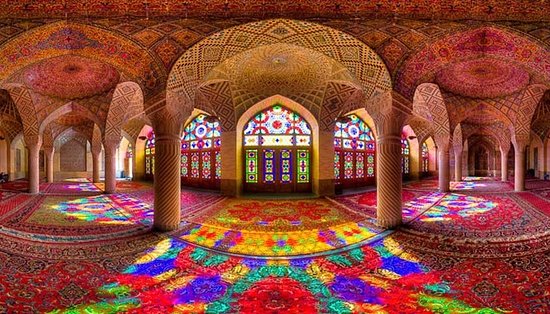
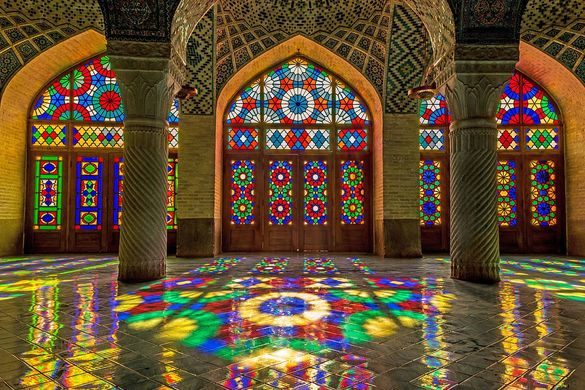
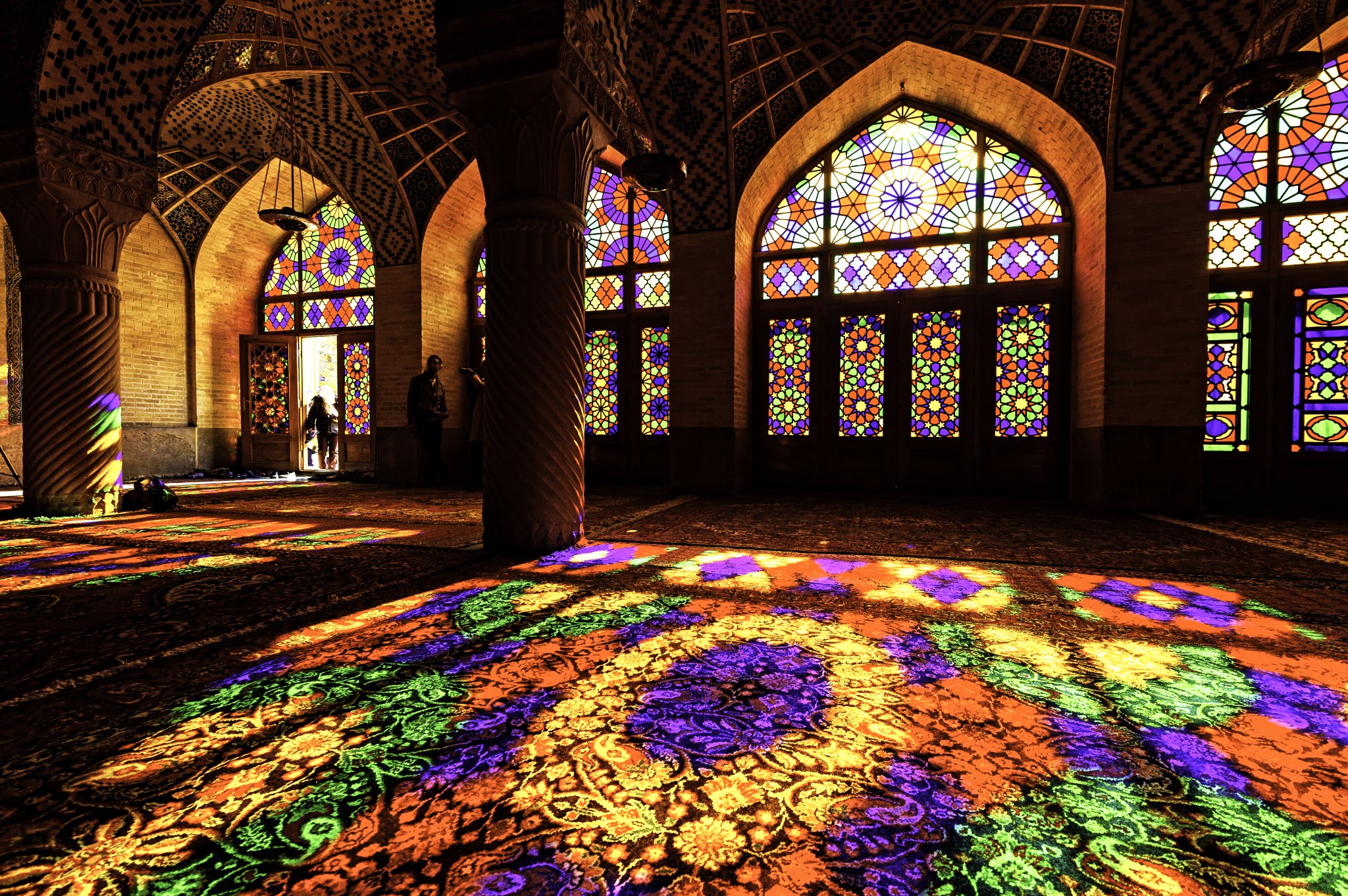
Jameh Mosque of Atigh, also called the Adineh Mosque, is the oldest mosque in Shiraz and is located to the east of the Shahragh shrine, one of which is inside the courtyard of the shrine. Archaeological excavations show that the mosque was built on the remains of an old (possibly fire-worship) shrine, and even the earlier building plan was influential in the design of the mosque. This is an old shrine from the pre-Islamic era; But due to limitations in exploration, it is unclear which historical period it belongs to. The construction of this mosque belongs to the era of Amr ibn Al-Layth Saffari, the second ruler of the Safarid dynasty, between the years 879 to 900. The mosque has been rebuilt many times during its lifetime which many of these restorations are of considerable antiquity.
Haft Tanan Museum is one of the oldest historical sites in Shiraz. The museum dates back to centuries before the Zandieh, and its mansion is one of the monuments of the Karim Khan era. This garden is located in the Bon Kooh of Chehel Magham and north of the tomb of Hafez. Most tourists who have traveled to Shiraz in the last few centuries have described the Haft (seven) Tanan Garden and its beautiful mansion. The people of Shiraz also have a special attachment to this place. The reason for the naming of the Haft Tanan is the existence of seven graves from the seven mystics in the garden where Karim Khan Zand installed a large stone without any inscriptions. The stones are 360 cm by 78 cm in size and were all used by Zandieh. Until many years ago, it was the home of the Dervishes and asceticism, and now it has been transformed into a stone museum for many years, with samples of historical stones and ancient inscriptions are preserved. There is also a large pool in the middle of the main mansion, which was formerly filled with water from Rokn Abad. The Garden of the Haft Tanan is located at the end of Haf Tanan Boulevard, infront of Chehel Magham St.
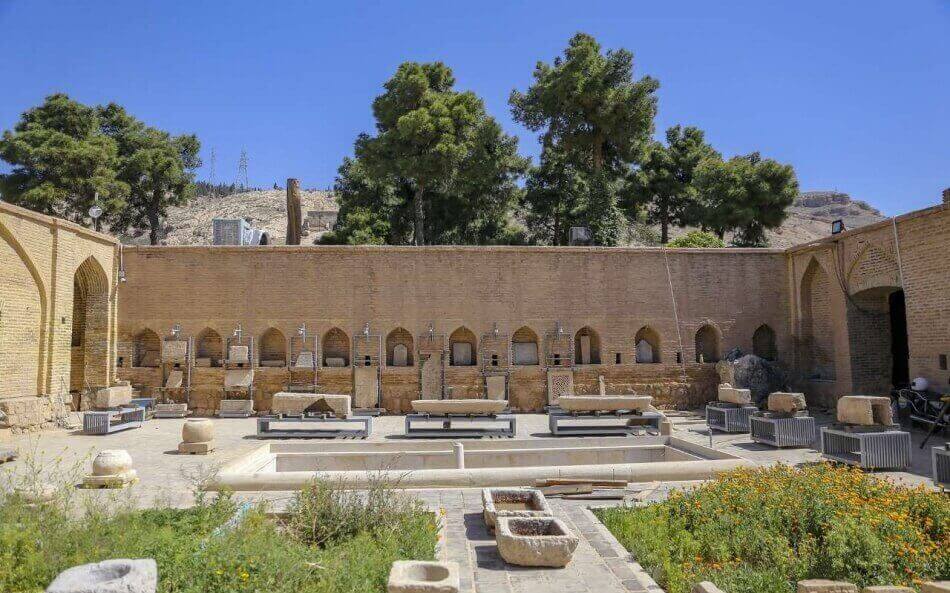
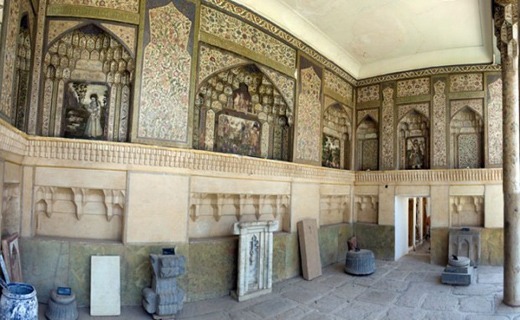
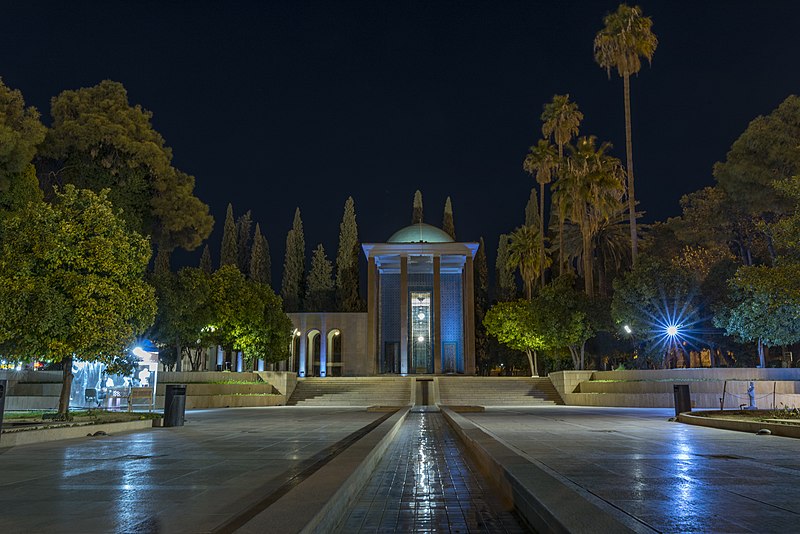
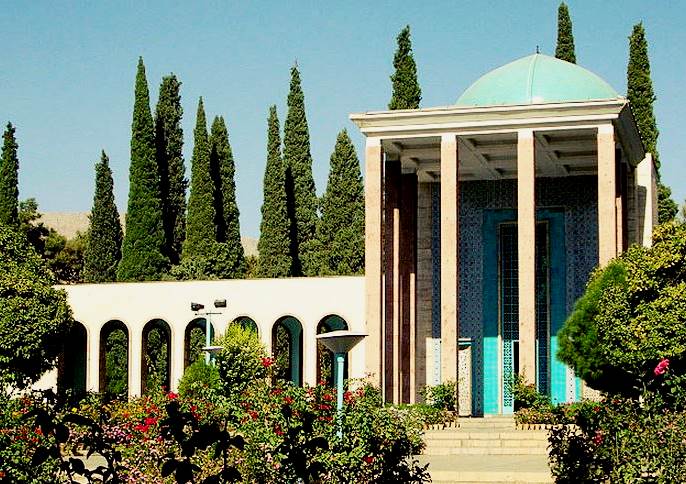
Saadi’s Tomb, known as Saadi’s place, is the place of Saadi’s life and burial. He was a prominent Persian poet. The tomb is located at the end of Bustan Street and next to the Delgosha Garden on the hillside northeast of Shiraz. Around the tomb, there are many graves of religious superiors buried there by their will, the most notable of which is Shurideh Shirazi, whose tomb is attached to the Saadi tomb by a porch. Sheikh Musharrafdin bin Moslehuddin Saadi Shirazi’s tomb has been registered with the National Monuments Association on November 11, 1979, with the registration number 1010,3. Iranian poet and writer, Saadi Shirazi was born in the year 1209. The poet has been given many valuable names; the master of speech, the king of speech, Sheikh Ajal, and the absolute master of Persian speech are only a part of Saadi’s nicknames. Saadi died in Shiraz in the year 1291 and his tomb is in Shiraz.
Hafez’s Tomb
The main monument of the tomb of Hafez is from the works of Karim Khan Zand and dates back to 1773. The original building had a porch with four stone pillars in the middle, passing north and south of the place, and two rooms were built on both sides. The tomb of Hafiz was outside the building and in the middle of the cemetery behind it. In later periods, iron fences were laid around the grave which did not have a proper face. The Hafez Brigade became as it is now since 1936 to 1939. The stones of the Karim Khani pools, which were demolished to continue Zand Street in Shiraz, were moved to the tomb site and used in the pools there. Preserving the four main pillars of the old monument, they created 16 monolithic stone pillars, and created a large twenty-meter-long porch with 56-meter-long, painted and plaster and tile decorations all of Shiraz’s old and original style. Poems were created by Hafiz in the middle of the large porch in the second garden and the old tombstone was preserved in its original location. The tomb of late Ahli Shirazi who died in 1518 and the tomb of the late Forsat al-Dawlah Shirazi who died in 1921 is located below the tomb of Hafez. The original design of the tomb of Hafez goes back to the year 1452. About 5 years after Hafez’s death, Shamsuddin Mohammad Yaghmaei, the Minister of Mirza Abolqasem Gorkani, the Emirati Fars ruler built a dome over the Hafez tomb and built a large dock on the tomb. Hafez’s tomb was restored during the reign of Shah Abbas of the Safavid Empire and was once again restored during the Afshar period by Nader Shah Afshar. During the Zandiyeh period, Karim Khan Zand completely changed the architectural style of the tomb and built a fort on the style of its buildings and placed a marble stone on the Torbat Hafez. During the Zandiyeh period, Karim Khan Zand completely changed the architectural style of the tomb and built a fort on the style of its buildings and placed a marble stone on the Hafez’s tomb. It was renovated in the 1898 year by the order of Reza Pahlavi and designed by Andre Godard, preserving the present-day 4 pillars. Godard is one of the great Orientalists with a particular interest in Iranian culture and art.
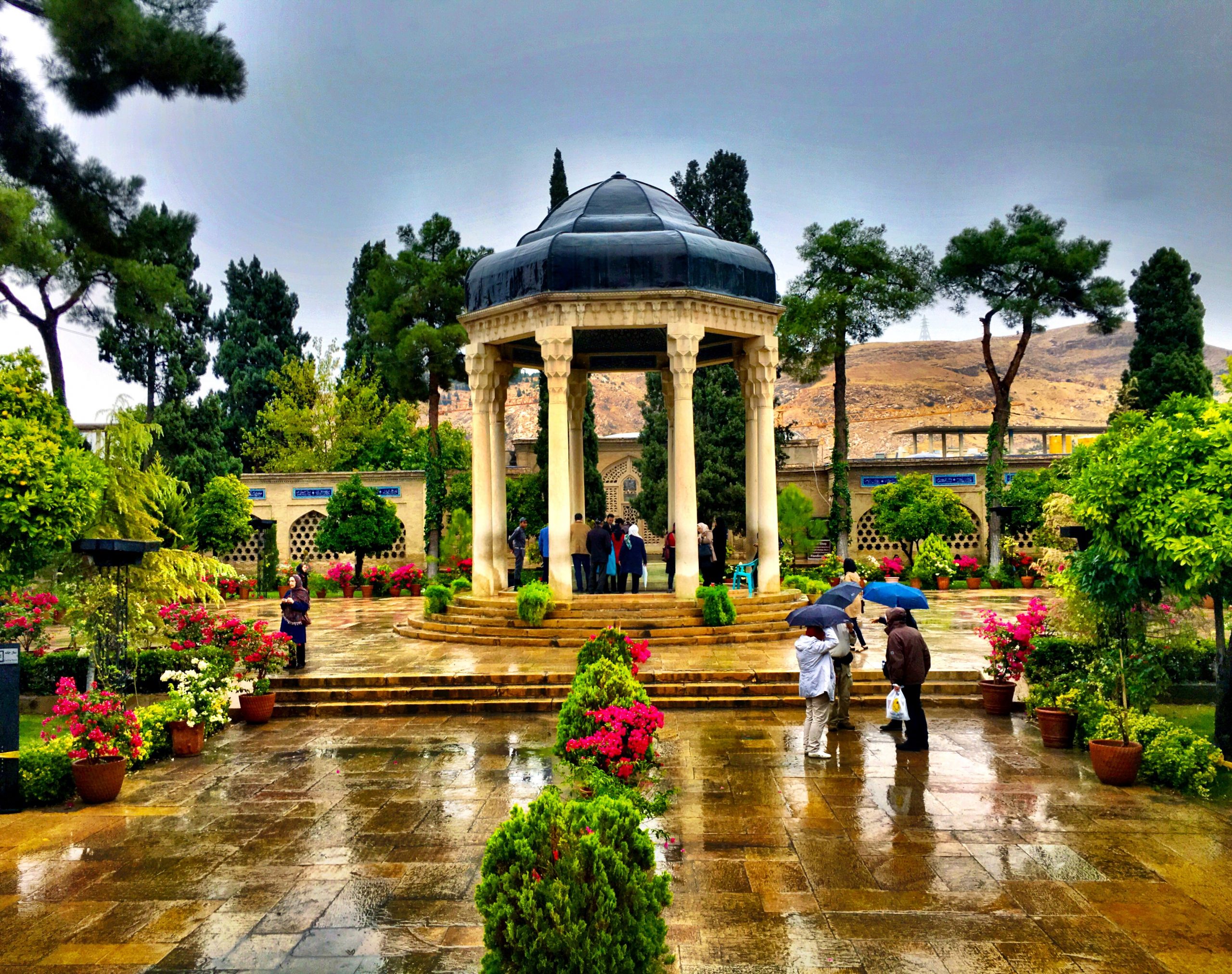

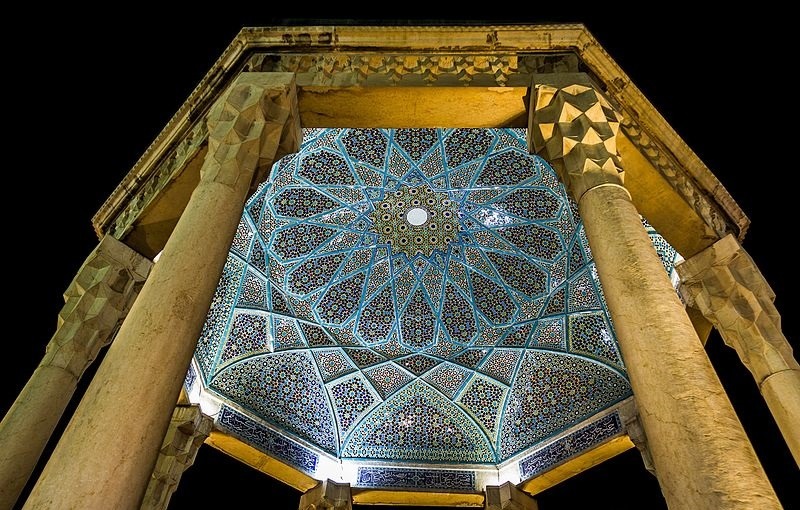
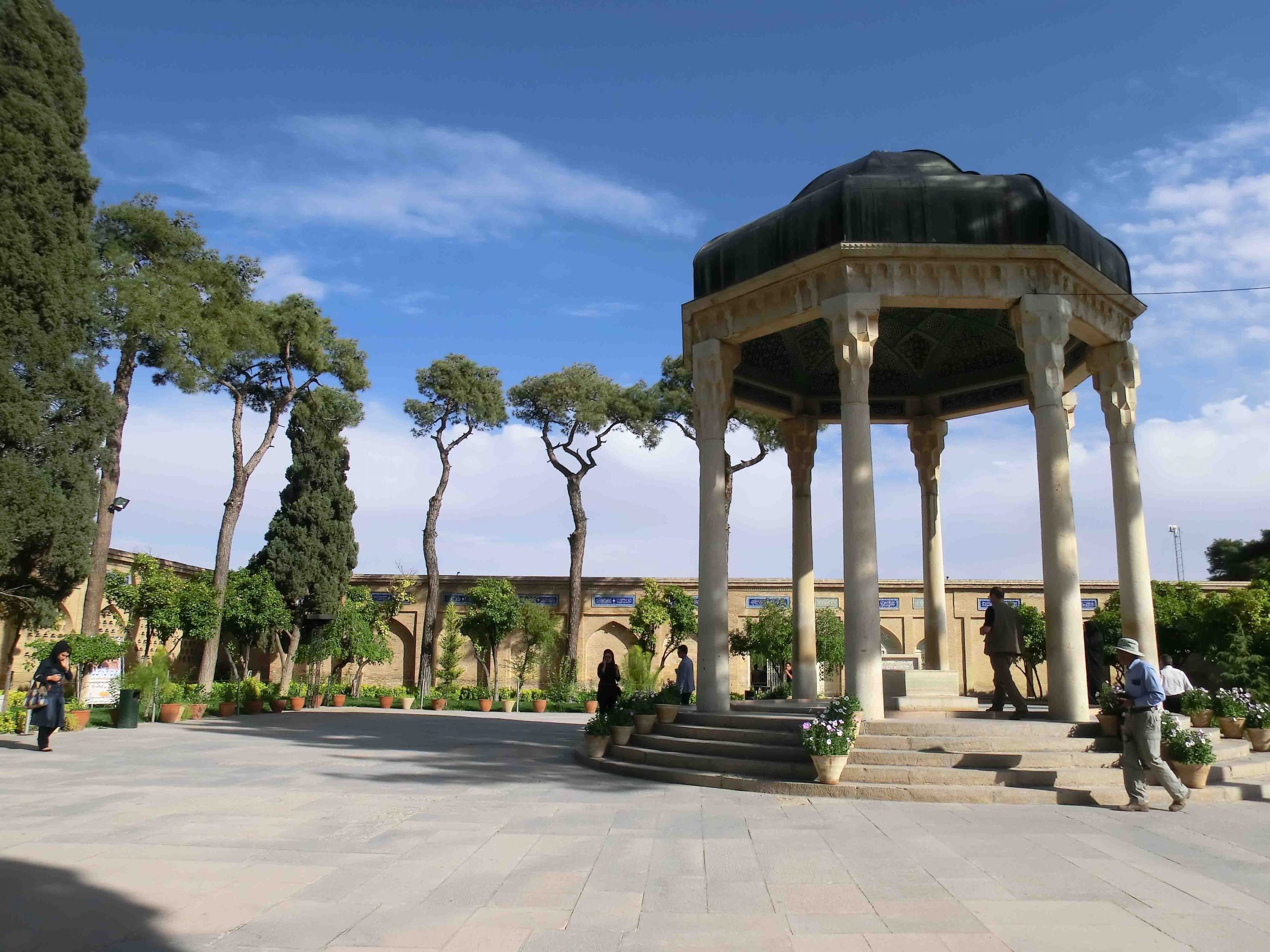
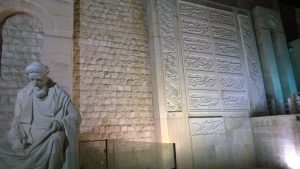
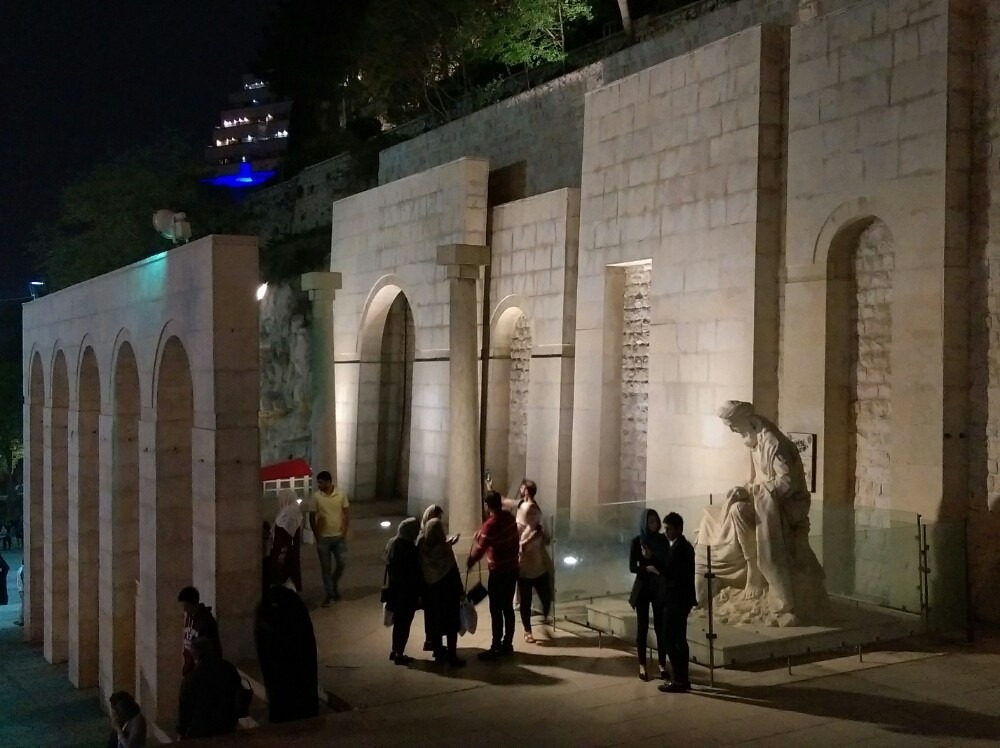
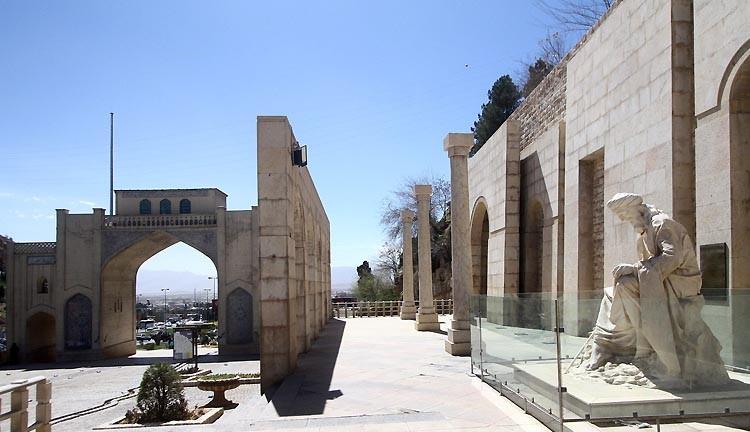
The Tomb of Khaju Kermani, the Persian ghazal gem, is located on the slope of Sabou Mountain in Shiraz. Khawaji Kermani, is considered one of the most prominent Persian poets of Iran in the 14th century. His sonnets, most of which have mystical themes, have been written in Iraqi style and have had many influences on contemporary poets and beyond. Khaju has left valuable work in his lifetime, most of his works are poems. Nowadays, the tomb of this famous Persian poet is located in the Allah Akbar Strait of Shiraz and is visited annually by tourists and other travelers of Shiraz. The tomb, built in the year 1937, overlooks the Qur’an gate and the water of Rokkan Abad also passes by it. Kermani’s unique architecture has made many tourists devote part of their time to visiting it. It is an outdoor tomb with two columns at the bottom and top. According to the customs of that time, two stones were placed above and below the graves of poets and mystics. There are three caves near the tomb of Khawaji Kermani, where his disciples may have been praising God and the prominent role played by Iranian myths and historical events on them and their interiors. And the prominent role played by Iranian myths and historical events can be seen on their walls and interiors. The statue of Khajawi Kermani is also built next to his grave, which adds to the visual beauty of the area.
Shah Cheragh is the name of a mosque and tomb in Shiraz that is believed to have been buried by Shiites, Ahmad bin Musa, the oldest son of Musa Kazem, as well as Muhammad bin Musa, one of the brothers of Ali bin Musa al-Reza. He traveled to Khorasan but on his way to join his brother was killed on the way by members of the Mamun Khalifa Abbasi in Shiraz. The tomb is located north of Ahmadi Street in Shiraz.
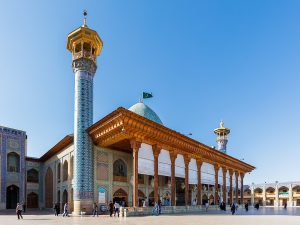
Gomrok Caravanserai is a caravanserai of Shiraz, located in the neighborhood of Prince Darb and in the northern half east of the Vakil Bazaar. This inn is one of the monuments of Karim Khan Zand. The inn has an ore covered with plaster Mogarnas and an old door. A small corridor and a pair of cellars link the inn to the entrance. This inn has two floors and each floor has cells that are slightly above ground level. These cells are located on four sides of the inn. There is also a red basin in the middle of the courtyard with carved stone edges. The left side of the inn opens to the warehouse. Inside the inn of the inn and near the west side, a mosque was built in 1901. The mosque is called “Hussein bin Ali”. The inn is now the wholesale center for textile products.
The Church of Simon the Giver, this Christian church, is one of the most beautiful churches in the country with respect to the details of Iranian architecture. The roof of the chapel is a brick-knocked vault and has colorful windows with fine-grained engineering drawings instead of windows everywhere. Such windows and doors can be seen in the old houses of Shiraz. Construction of this church was completed in year 1899 and the first pastor of this church are Ralph Narman Sharp, an English scholar and Orientalist.
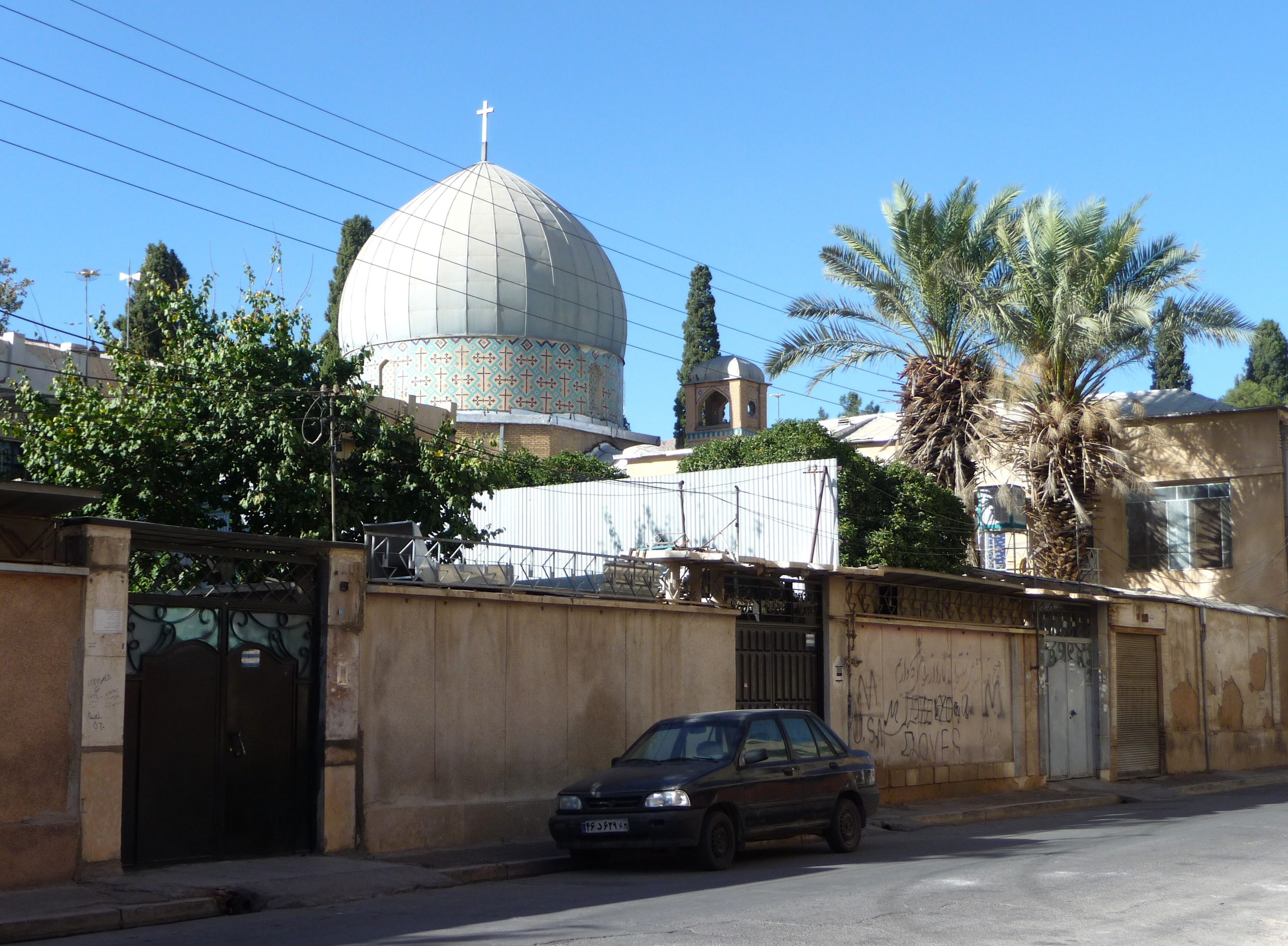
The Church of Christ’s Glory is from the Pahlavi period and is located in the village of Qalat in Shiraz city, Iran. This work has been registered as one of the national monuments of Iran on 24 October 2003 by Register No. 10497. This church is located next to a sacred tree called the plant of Haji Man.
Kowar Bridge, one kilometer from Kowar, on the old Shiraz route to Firouzabad, which leads to the Persian Gulf. It is built on the river “Qareh Aqaj” and seems to have belonged to the Sassanid period, which was later reconstructed, especially during the Safavid and Qajar periods. The Kowar Bridge was 125 meters long, 10.30 meters high and 3.80 meters wide (including turrets) and had six different openings, two of which are now collapsed. The upstream and downstream pedestals have sharp crushers whose shapes vary depending on rocky foundations and reconstructions. The materials used are pieces of natural stone in various shapes and sizes and mortar mix. The bases of the bridge are located separately on the natural reefs of the riverbed. Therefore, the bridge map is tailored to the position of these reefs in the riverbed. Such a structure and foundation has made the Kowar Bridge extremely durable. Such a structure and foundation has made the Kowar Bridge extremely durable. At the southern end of the bridge and the middle base, it rests on the cliff side of the river as well as on the first north end of the room bridge, which can be accessed in drought conditions from the river bed by several steps. These rooms were used to accommodate travelers or rest of the bridge guards. The kowar River (Qareh Aghaj) was bridged during the Sassanid period, and its historical record number is 947 in Iran’s national monuments. The foundations of this bridge were built in the Sassanid period and rebuilt in the Islamic era. Plan type of this bridge has six openings in width. The two middle craters were destroyed and the bridge was built on a natural rock. Its tranquil pool is also naturally selected in the rock and is not handmade. The culverts of this bridge are triangular and semicircular. Materials used include carved stone at the base and carcass and mortar at the base, brick arches and no ornaments.
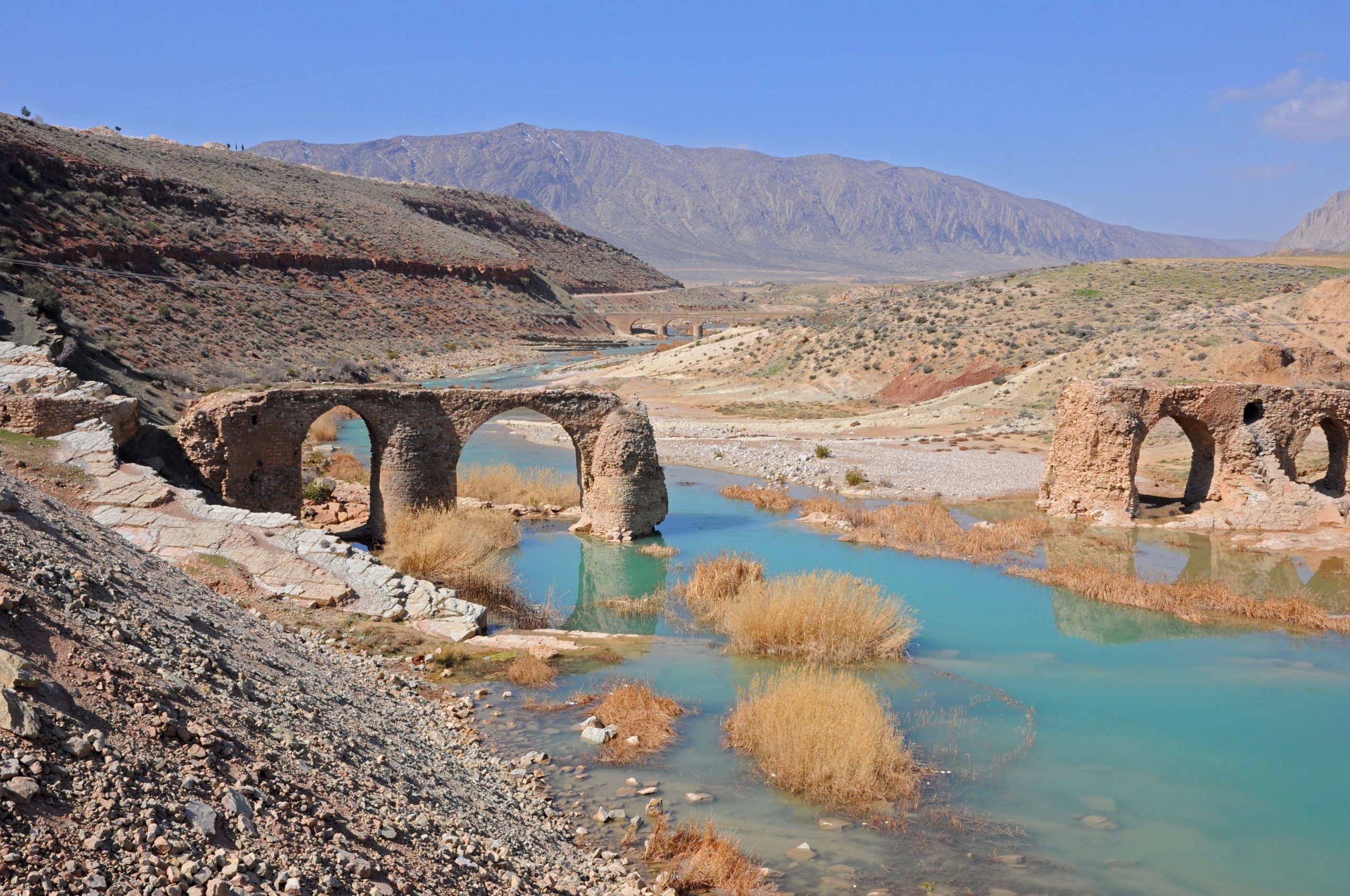
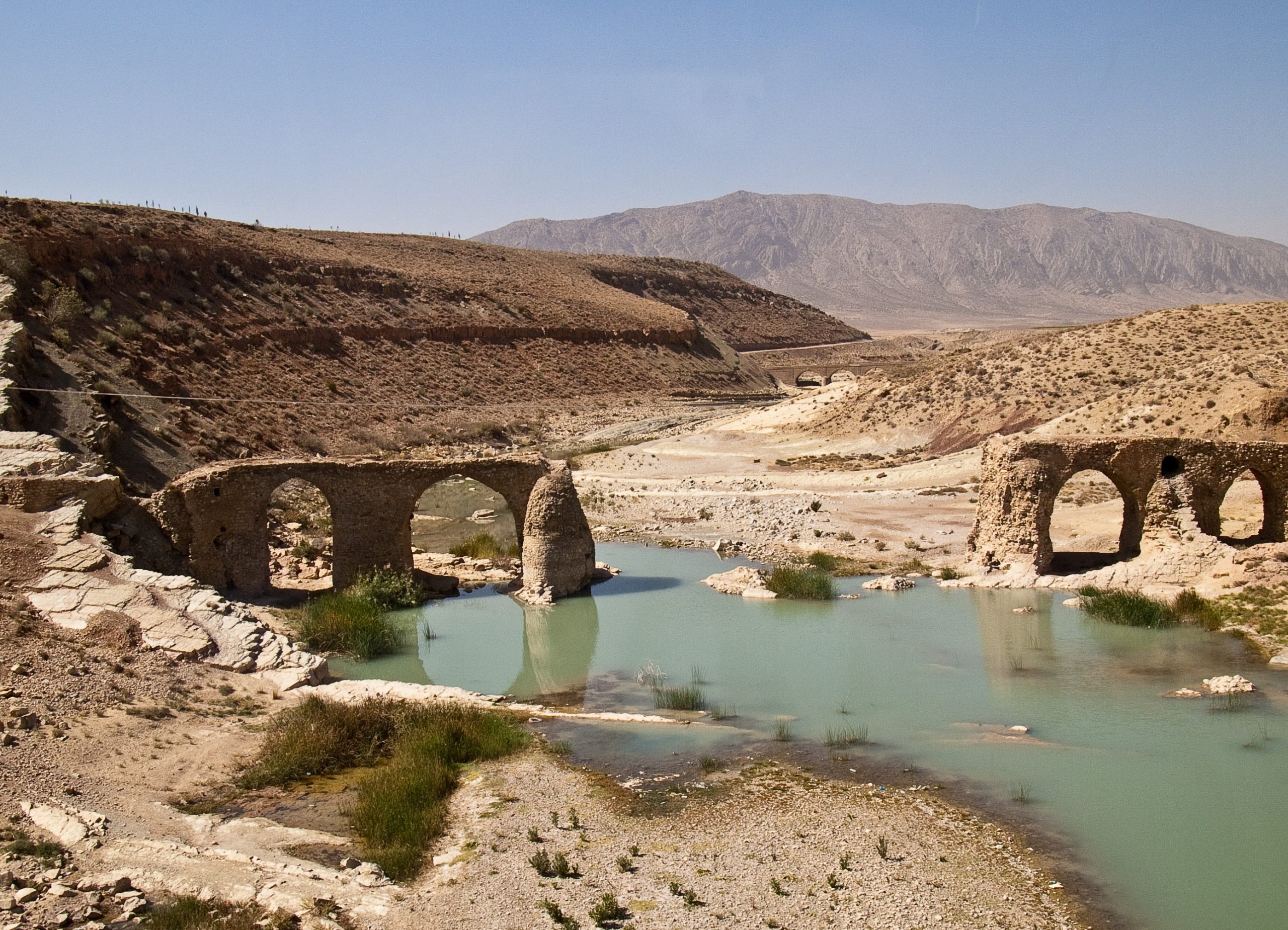
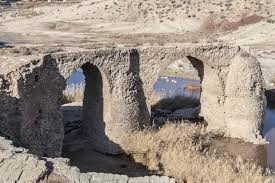
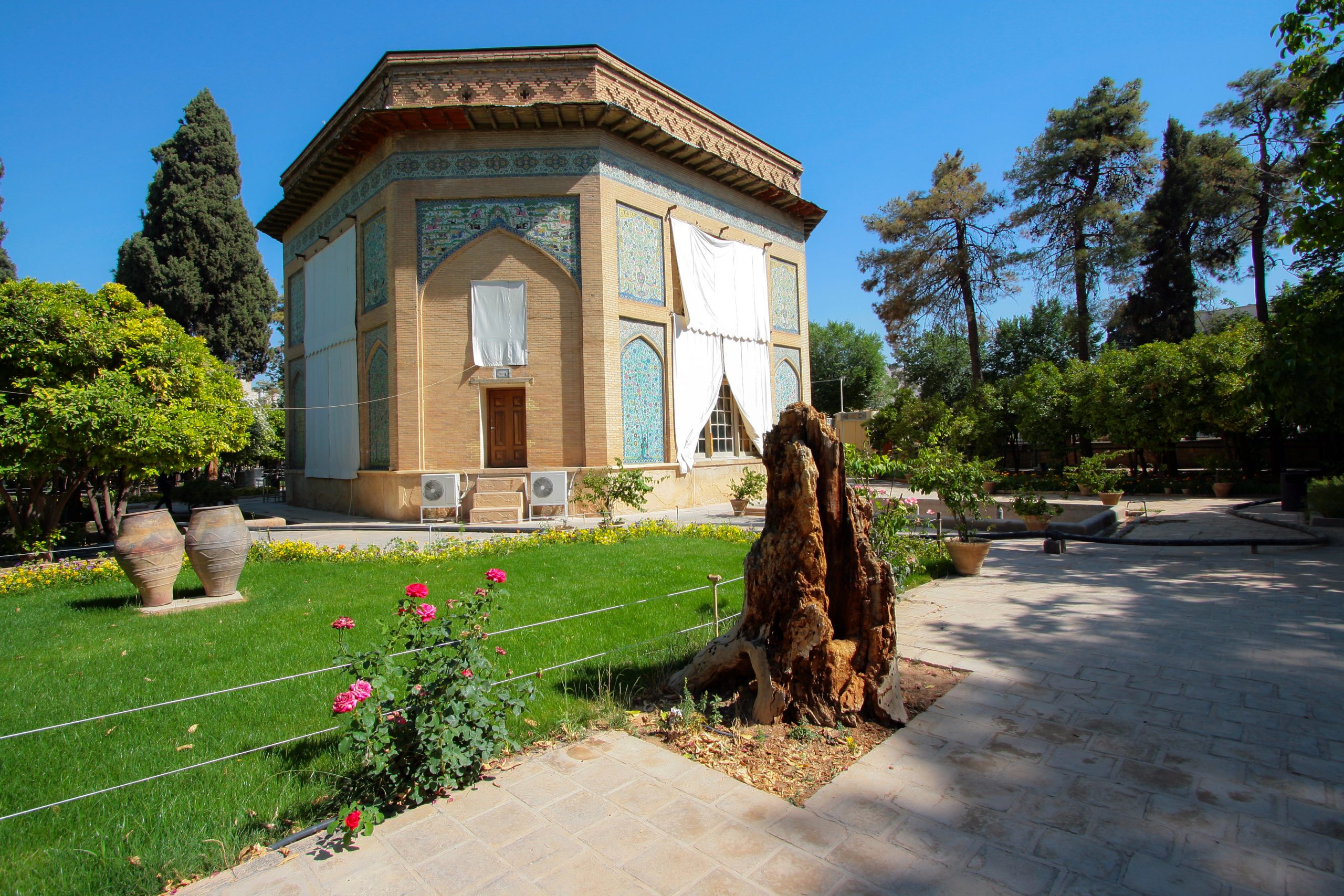
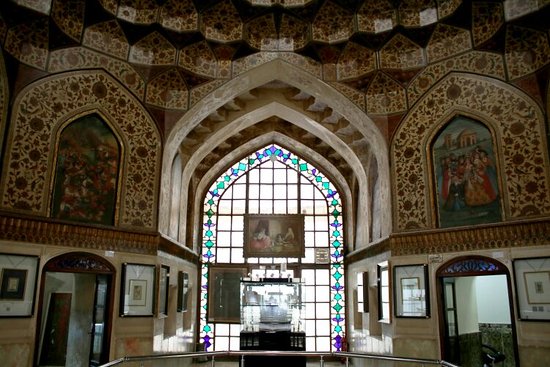
Shiraz Pars Museum is one of the most important places of interest in Shiraz, founded in 1936. The Pars Museum of Shiraz is where the Zindiyah empire and rulers were, many years ago, where only kings and ministers were allowed to travel. In fact, the Pyramid Mansion, located in Nazar Bagh of Shiraz, has been renamed Pars Museum since 1315, and the public has been able to visit this beautiful building. It is worth mentioning that Pars Museum of Shiraz is the oldest museum of Shiraz which contains very old objects and original Iranian paintings etc. The location of Shiraz Pars Museum is located on one side of which is the Zandieh complex, the Vakil Bazaar, the Vakil Bath and the Vakil Mosque, and the other is the Citadle Karim Khani line. The street that separates the Pars Museum of Shiraz and the Zandiyeh Collection from the Karim Khani citadel is one of the famous streets of Shiraz called Karim Khan Zand Street.
Eram Garden is one of Shiraz’s most spectacular visions that take travelers to the glorious period of our Iranian land. The Eram Garden is a full-fledged Iranian garden and has all the criteria for an Iranian garden. It was built during the Seljuk era and in 1967 his name was registered in the national list of Iran. The Eram Garden of Shiraz has been refurbished many times so as not to lose its splendor and is fortunately still one of the most popular sights in the city. Unfortunately, it is not known who erected the Garden of Eram but it is mentioned in documents dating to the tenth and eleventh centuries AH. Now the Eram Garden is owned by Shiraz University and the public is allowed to enter and visit it. The Eram Garden, like other Iranian gardens, has a central and middle edifice, a stream and orchards and lush trees. Since this garden covers an area of 12.7 hectares and is full of citrus trees, it is advisable to visit it during your trip to Shiraz, be sure that the scent of Orange blossom and orange will take you away. The garden was listed on the UNESCO World List in 2012 and is now a tribute to all Iranians around the world.
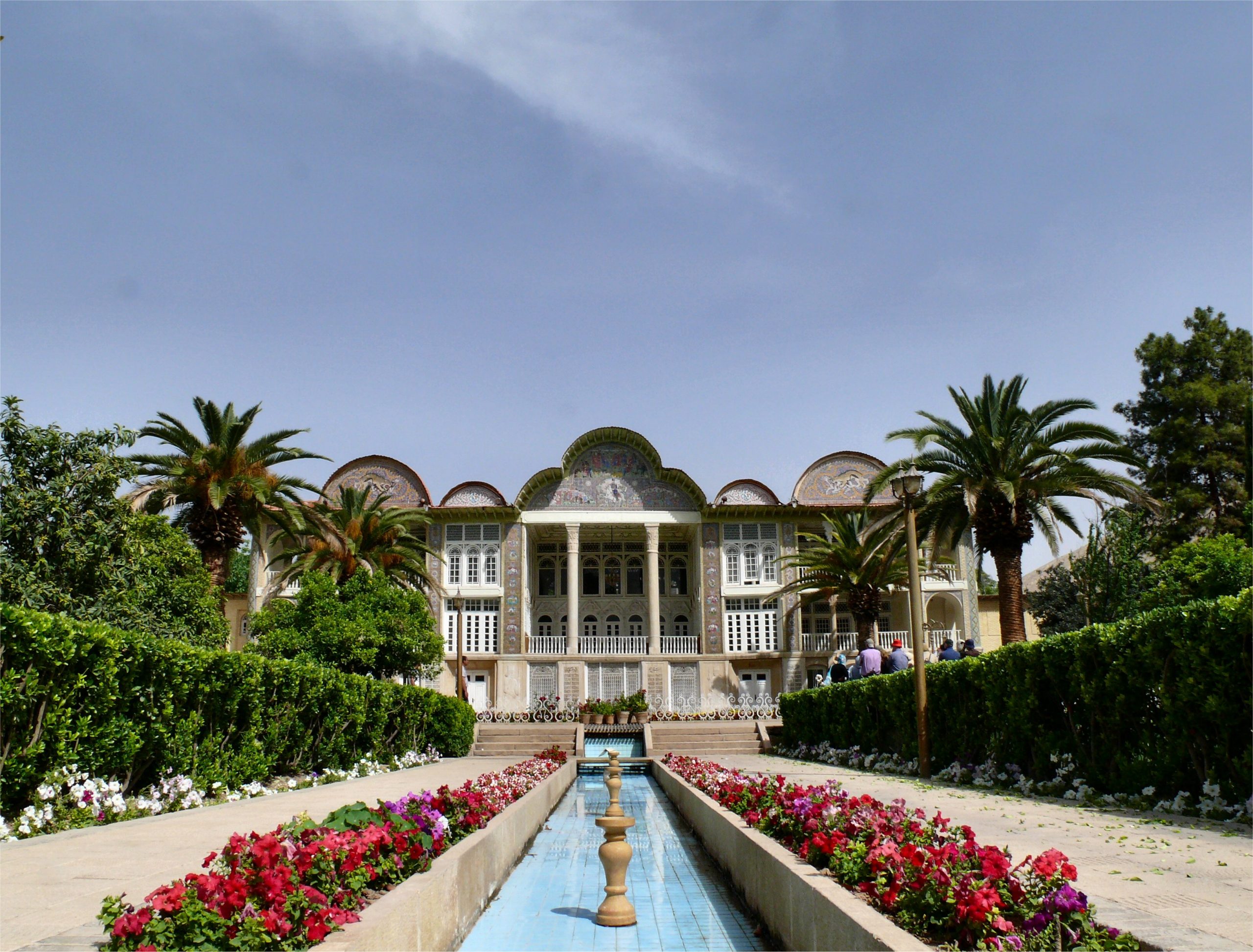
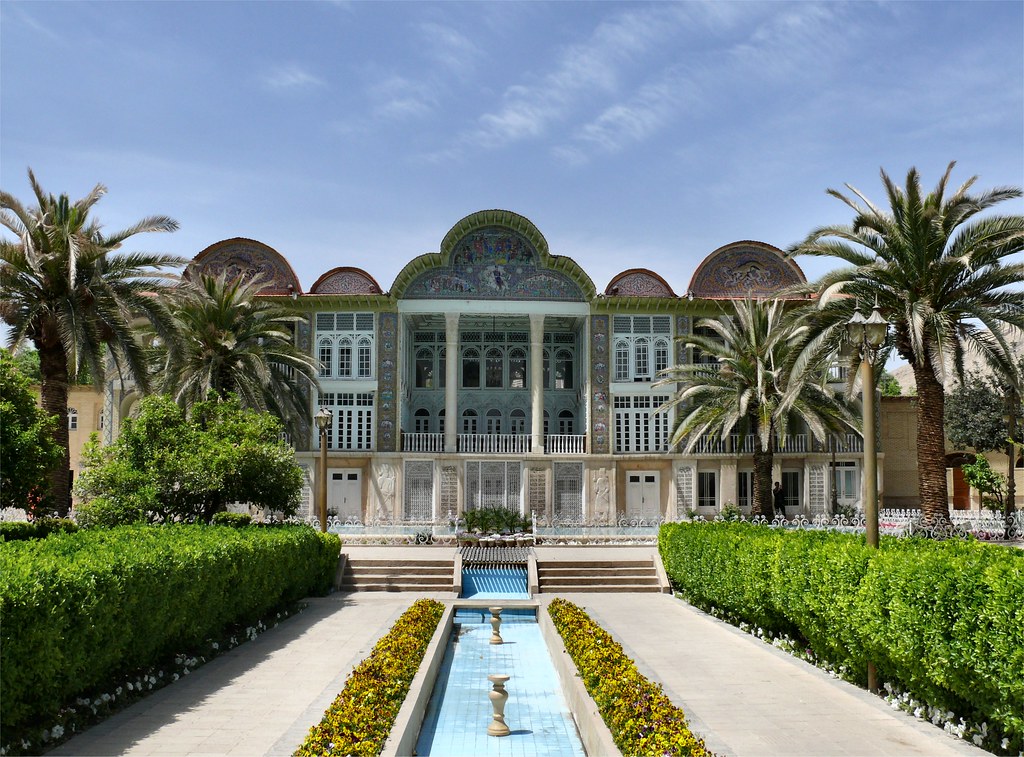
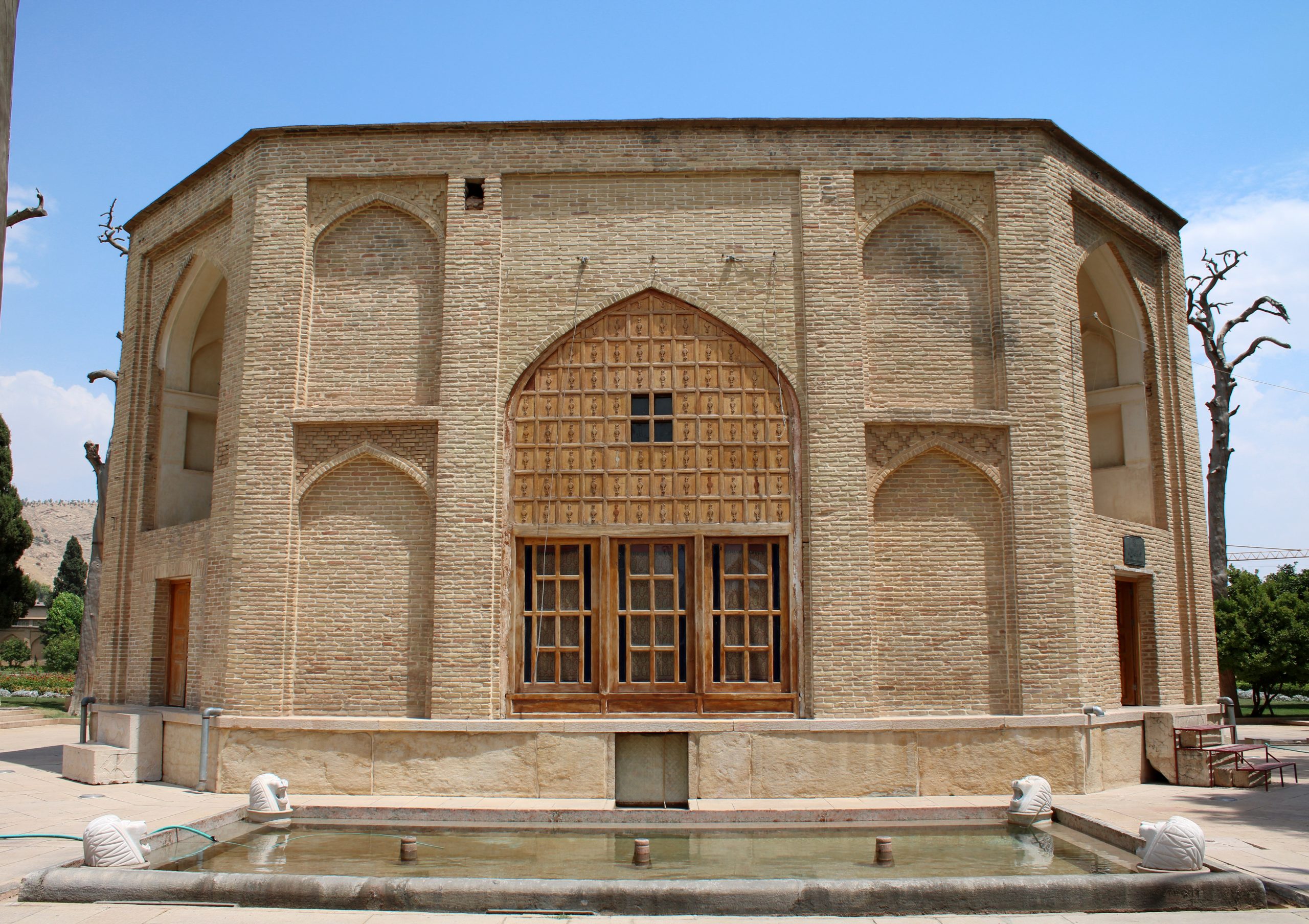
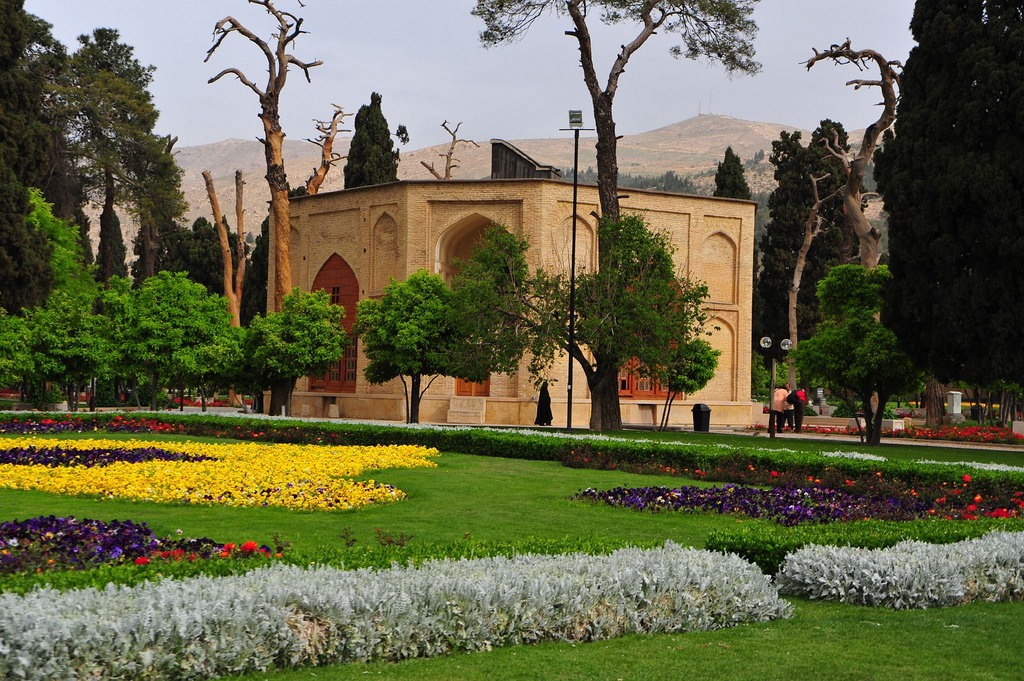
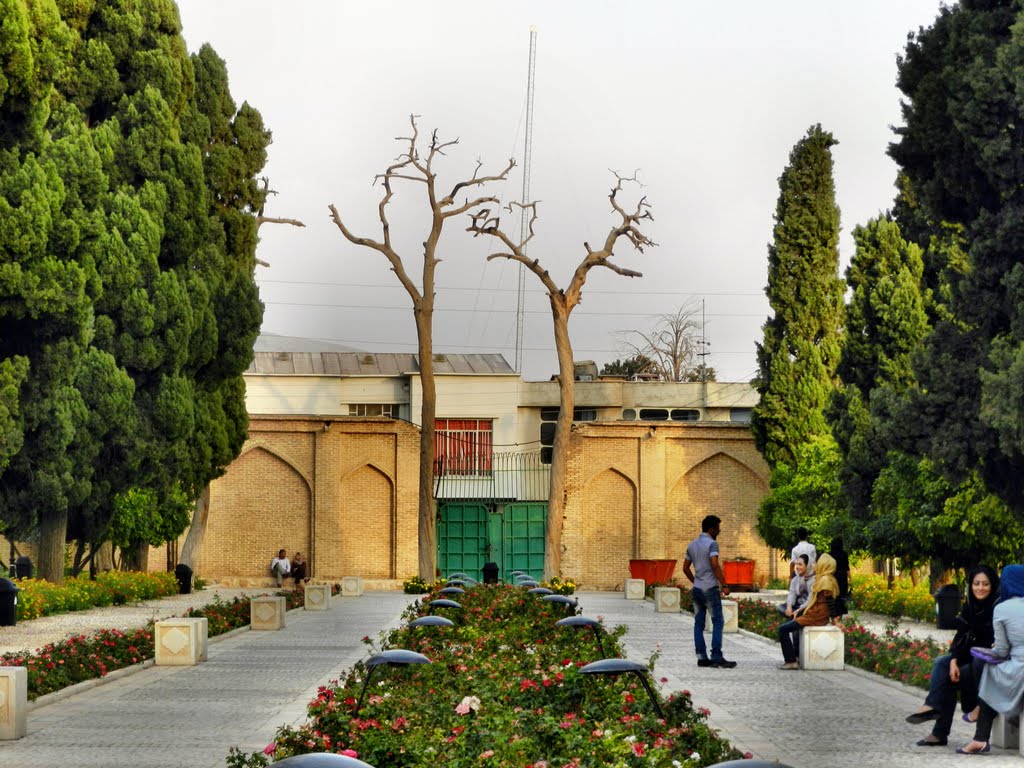
Jahan Nama Garden was very lush and prosperous under the rule of Al-Muzaffar and Al-Inju. This garden, like the three gardens of Eram, Delgasha, and Takht-e Gharacheh, which are famous gardens of Shiraz, before Timur Gurkani’s attack, was finally prosperous. Ibn Arabshah, the historian of the Timurid period in the book “Ajayeb al Maghdour”, called the garden “Zint aldnia” means “ornament of the world”. The garden was also important during the Safavid dynasty and is mentioned in the Chardin’s logbook, Jeweler and French Tourist, but after the extinction of the Safavid dynasty, where insecurity is sweeping the country, the garden is almost destroyed. The city gate (the Qur’an gate) leads to a very beautiful street. There are gardens on either side of this street, each with a magnificent entrance and a half-dome vault and a pergola over each entrance. The doors of the garden are opposite of each other and their symmetry has created an interesting situation. In the middle of the street is a square pool that is about the width of the street, and in order to be able to pass through it, the facade of the both sides gardens are about 30 feet behind. Karim Khan Zand fenced the garden in the year 1771 and created beautiful streets and extensive tree planting around the mansion. After the Zandiyah era, in the Qajar era, the Jahan Nama Garden was one of the most magnificent gardens, and the Garden Mansion served as a place for government guests. There are a variety of old cypress and pine trees, citrus fruits and fruit trees in the Jahan Nama Garden.
Delghosha garden of Shiraz is seven and a half hectares, with most of its trees being sprouted with Orange blossom and orange trees, and what makes it famous is its beautiful, fountains and pavilion, in the middle of it, Meanwhile, the first Iranian pergola can be seen in this garden, and since then there have been Shamdani plant festivals in the spring. As the garden is located within a 5-minute walk of Saadi, the water flowing from Saadi’s tomb aqueduct also flows this garden, the aqueduct known as Gazaran. There is fence around the garden, but tall trees and shrubs cover the fence all. There are fountains and aquifers throughout the garden that reaches the main pavilion. The main axis is divided into four rectangular sections with a perpendicular axis plumb to it, and a pavilion or a pergola is built in the center of this intersection and makes it all the more spectacular. These days, the Delgashegah Garden of Shiraz has become a museum, with items such as coins, a written Quran on deer skin from the Seljuk era, stamps, matches, and maps of Iran before the Achaemenid period to the Qajar and fifty old radios including oil radios.
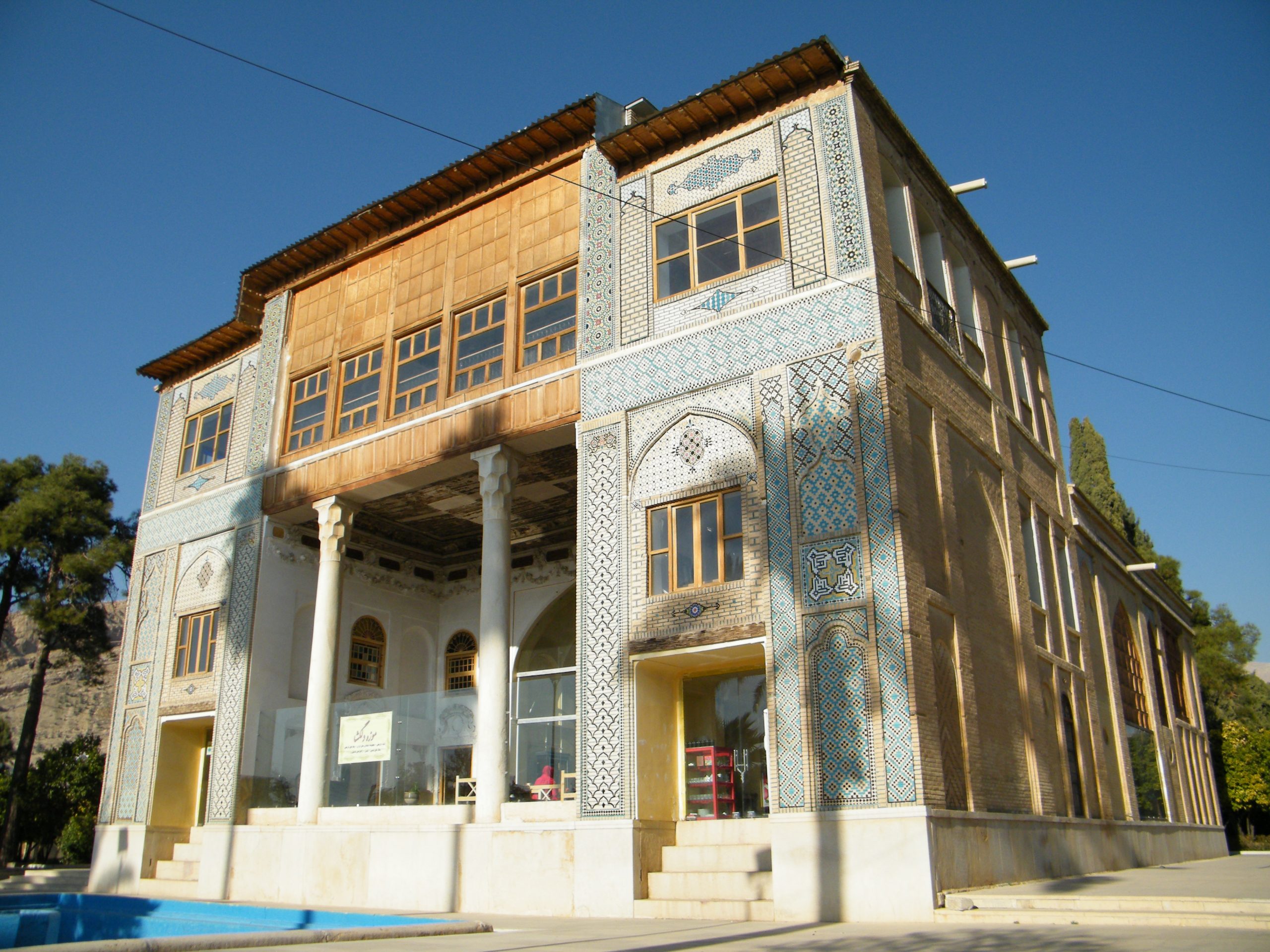
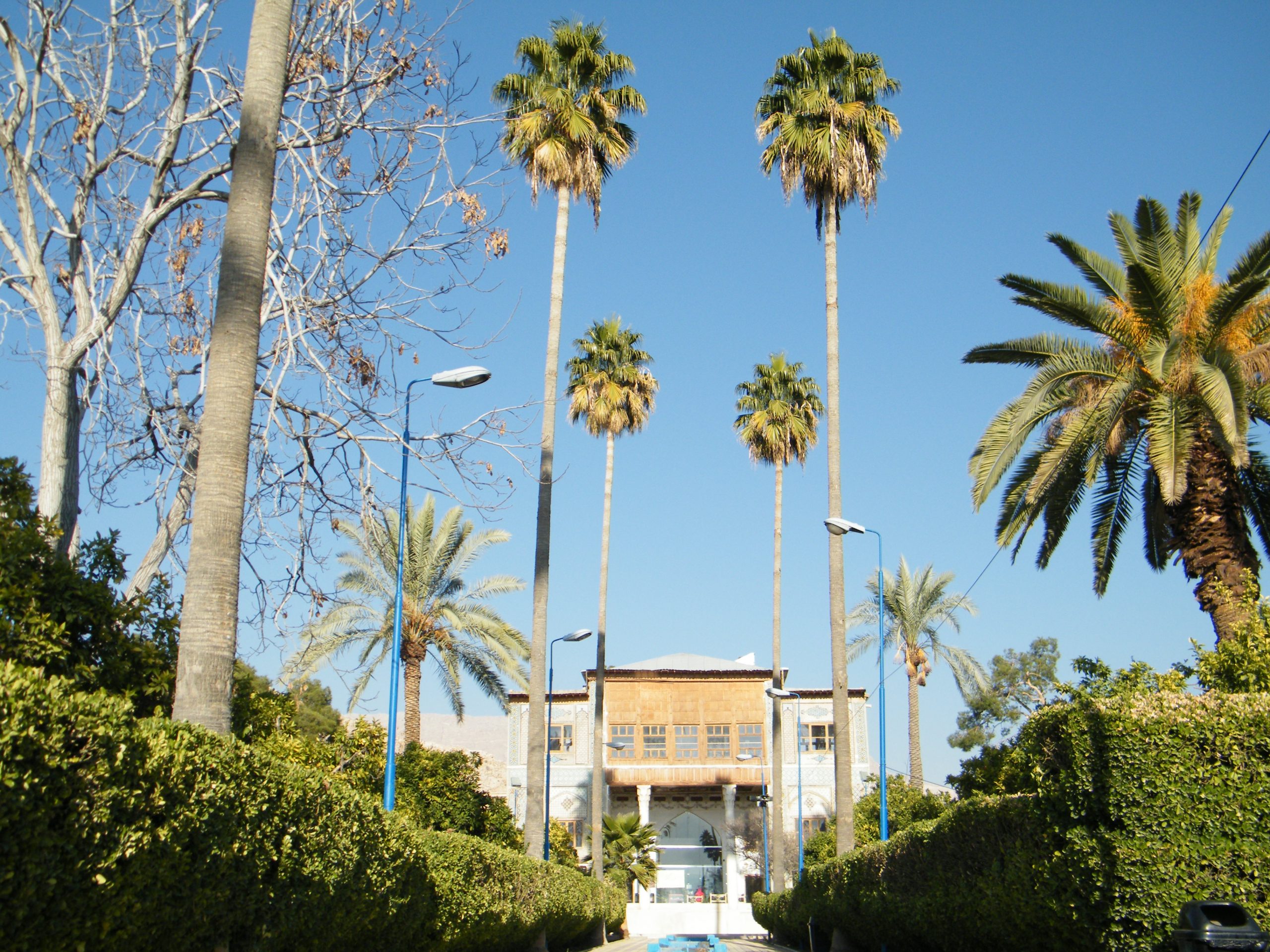
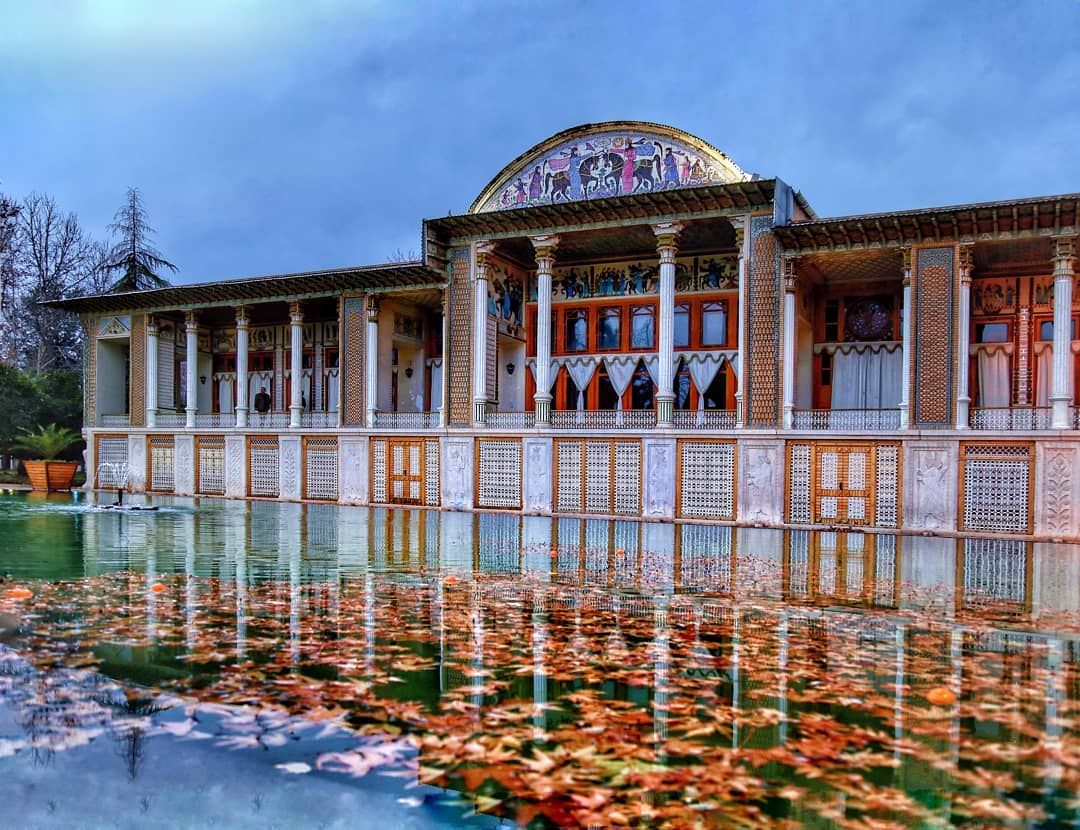
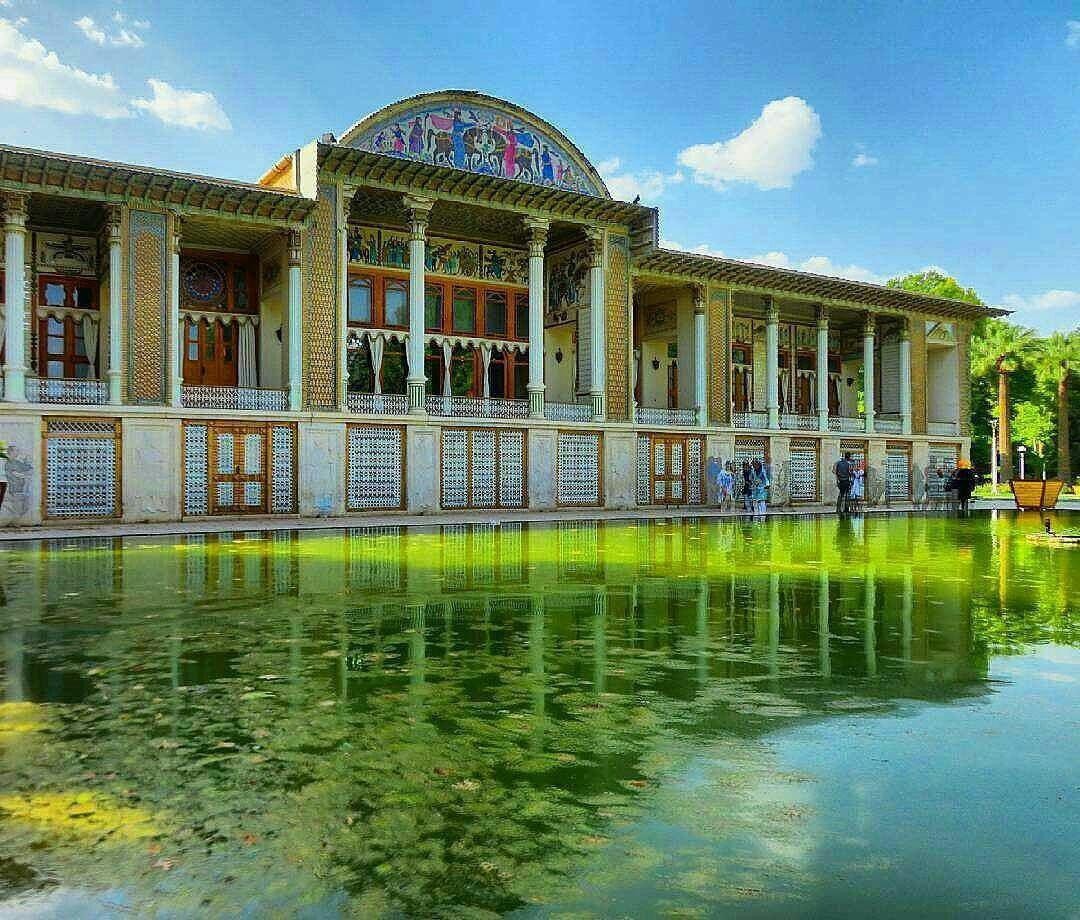
Afif-Abad or Golshan Garden is one of Shiraz’s monuments. Located at the end of Shiraz’s Afif Abad Street, the garden is now in the hands of the military and has one of the largest weapons museums in the Middle East. Afif-Abad Gardens is about 127000 square meters and it is the most beautiful historical garden in Shiraz. It was one of the most important gardens and a promenade of kings during the Safavid period. During this dynasty the garden was used by the Safavid kings. During Qajar dynasty, Mirza Ali Khan bought the garden and renovated the garden and trees and built a beautiful mansion. Qavam the second purchased the aqueduct near the garden for irrigation. At the end of the Qajar dynasty, the garden was taken over by Afifeh Khanom, the niece garden owner. She made extensive changes to this garden, which is why it became known as Afif-Abad. But during the Pahlavi era, heirs of the garden donated it to Farah Pahlavi, the wife of Mohammad Reza Shah. The Army bought the garden in auction in year 1962, after the Islamic Revolution and with the efforts of the Islamic Republic of Iran and on the occasion of Army Day on April 18, the Garden of Afif-Abad is transformed into the country’s No.2 Military Museum.
Qavam House is one of the sights of Shiraz located on Lotfali Khan Zand Street. This garden was built during the reign of Nasser al-Din Shah Qajar and ordered by Ali Mohammad Khan Qawam and is now one of the most spectacular tourist attractions in Shiraz. The Qavam dynasty ruled the Persians for a long time in the Qajar dynasty, and many buildings remain, such as the Afif-Abad Garden, the Kalantari Garden, the Biglabeigi Garden, and the same collection of Qavam. During the reign of Mohammad Reza Khan Qavam-ol-Molk III, the garden of Qavam and his mansion were called exterior and used for administrative purposes; The home of Zint al-Molk was in the interior, and the family lived there. The Outer Mansion was a place for political and military work or meeting with representatives of foreign governments. The two sections were connected by a tunnel, and the building of the present Narangestan was the “exterior” of the Qajar era. They lived for years in this house, until finally the house was devoted to Shiraz University in year 1966.
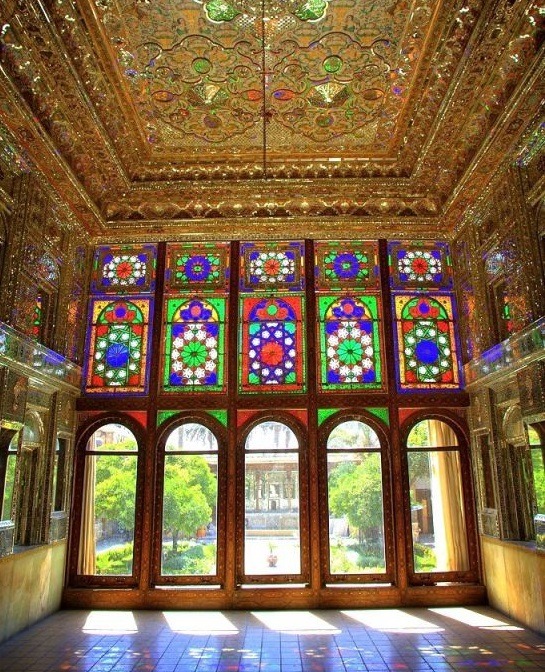
The National Park is one of the most beautiful parks in Shiraz, which is adjacent to the Hafez Tomb and is on the Hafezieh Road. In the year 1315, the garden was renovated and added to its beauty by planting orange and street lighting.

